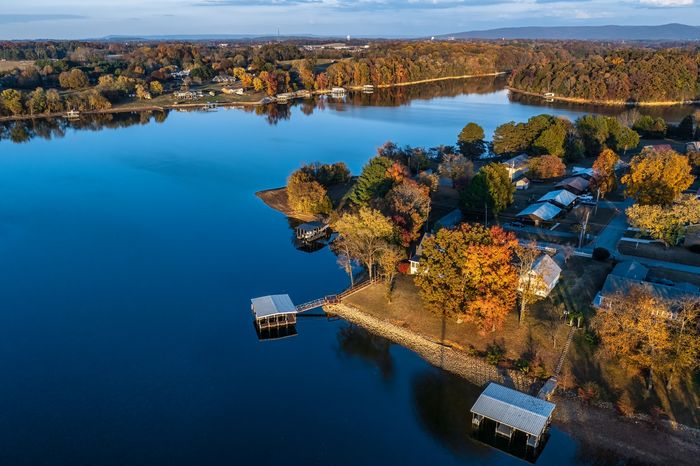 The Central Bank of Russia and the Russian treasury are considering testing using the Russian CBDC, the digital ruble, to complete budget settlements. The tests would involve using this CBDC to make payments to businesses and citizens and receiving payments from these in CBDC, to ensure the targeted use of these funds. Russian Digital Ruble […]
The Central Bank of Russia and the Russian treasury are considering testing using the Russian CBDC, the digital ruble, to complete budget settlements. The tests would involve using this CBDC to make payments to businesses and citizens and receiving payments from these in CBDC, to ensure the targeted use of these funds. Russian Digital Ruble […]
Source link
budget
Biden’s 2025 budget targets crypto tax loopholes, expands digital asset oversight

The Biden administration released its proposed budget for 2025 on March 11, which includes provisions to implement a series of regulatory measures targeting digital assets.
The proposed rules are expected to generate nearly $10 billion in additional tax revenue by 2025.
Closing loopholes
The new budget proposals specifically target a loophole that has previously allowed wealthy crypto investors to benefit disproportionately. By closing this gap, the administration seeks to create a more level playing field for all investors and increase tax fairness. The measure is part of a broader effort to adapt the nation’s tax code to the modern era of investment and technology.
Moreover, the proposals include a comprehensive approach to digital assets by applying wash sale rules to these assets, addressing related party transactions, and modernizing regulations to treat securities loans as tax-free to include other asset classes. These steps are designed to update the tax system to reflect the unique characteristics and challenges of digital asset transactions.
Furthermore, the budget emphasizes enhancing reporting requirements for financial institutions and digital asset brokers. This adjustment aims to ensure that transactions involving cryptocurrencies are monitored with the same diligence as traditional financial exchanges, thereby increasing transparency and reducing opportunities for tax evasion.
The government also plans to require certain taxpayers to report foreign digital asset accounts, extending the reach of US tax compliance efforts internationally.
Financial details
According to the document, applying wash sale rules to digital assets is projected to raise over $1 billion in tax revenue in the fiscal year 2025 alone.
The budget also states that including digital assets in mark-to-market rules — which mandate the taxation of securities at their current market value rather than their purchase price — is expected to generate an additional $8 billion by the same year.
The proposal also introduces an excise tax on crypto mining operations, reflecting the sector’s rapid growth and relatively minor fiscal contributions, especially considering its environmental footprint.
The proposed excise tax on crypto mining endeavors is forecasted to decrease the national deficit by approximately $7 billion within the same timeframe. While similar tax provisions were proposed in last year’s budget, they faced legislative hurdles and were not enacted by Congress.
Aside from those crypto-related proposals, Biden’s budget broadly advances reduced costs for families, more robust Social Security and Medicare, and higher taxes on corporations and wealthy individuals.
According to CBS, the budget could trim deficits by $3 trillion over a decade while raising tax revenues by $4.9 trillion and allocating roughly $1.9 trillion to various programs.
Mentioned in this article
Latest Alpha Market Report
Congress unveils first six budget bills to avert government shutdown
Senate Majority Leader Charles Schumer, D-N.Y., left, and Speaker of the House Mike Johnson, R-La., attend a Menorah lighting to celebrate the eight-day festival of Hanukkah, in the U.S. Capitol on Tuesday, December 12, 2023.
Tom Williams | Cq-roll Call, Inc. | Getty Images
Congressional lawmakers on Sunday released the details of the first six budget bills needed to keep government agencies funded before they run out of money and a partial government shutdown takes effect this coming weekend.
The 1,050-page appropriations package has funding for six major areas of government that encompass military and veterans affairs departments, agriculture, commerce, energy and water, transportation, housing, and more.
Funding for those departments was due to expire last Friday, March 1, but congressional leaders struck a deal on Wednesday to extend those deadlines by a week and avert a partial government shutdown. It was the fourth such funding extension this fiscal year, as Congress has struggled to settle on a long-term budget plan.
This partial budget deal is a step forward in the push to secure a permanent budget plan for the rest of the fiscal year, which started Oct. 1.
But these six funding bills are just half the battle.
The other six appropriations bills that keep the rest of the government funded are due to expire March 22, giving Capitol Hill just over two weeks to negotiate the other half of the government’s spending plan.
Read more CNBC politics coverage
Still, leaders on both sides of the aisle are touting the first half of funding package as a win, though for different reasons.
Democrats are trumpeting the continued full funding of a special food assistance program for women, infants and children. They also secured wins on rent assistance and pay for infrastructure employees like air traffic controllers and railway inspectors.
“Throughout the negotiations, Democrats fought hard to protect against cuts to housing and nutrition programs, and keep out harmful provisions that would further restrict access to women’s health, or roll back the progress we’ve made to fight climate change,” Senate Majority Leader Chuck Schumer, D-N.Y., said in a Sunday statement.
Meanwhile, Republicans are trumpeting victories on veterans’ gun ownership and funding cuts to government agencies like the Environmental Protection Agency, the FBI and the Bureau of Alcohol, Tobacco, Firearms and Explosives.
“House Republicans secured key conservative policy victories, rejected left-wing proposals, and imposed sharp cuts to agencies and programs critical to President Biden’s agenda,” House Speaker Mike Johnson, R-La., said in a statement Sunday.
The funding package now heads to the House for a vote where it will likely face opposition from the House Freedom Caucus, a coalition of Republican hard-liners who have relentlessly opposed budget compromises over the past fiscal year.
“The clock is now ticking until government funding runs out this Friday. Between now and the end of the week, the House must quickly pass and send the Senate this bipartisan package,” Schumer said Sunday. “Once again, it will only be bipartisanship that gets us across the finish line.”
Don’t miss these stories from CNBC PRO:
U.S. Senate Majority Leader Chuck Schumer, D-N.Y., and U.S. Speaker of the House Mike Johnson, R-L.a., speak to each other during a Capitol Menorah lighting ceremony at the U.S. Capitol Building in Washington, D.C., on Dec. 12, 2023.
Anna Moneymaker | Getty Images
Top congressional leaders on Capitol Hill struck a partial budget deal to temporarily avert a government shutdown on Wednesday.
Leaders including House Speaker Mike Johnson, R-La., and Senate Majority Leader Chuck Schumer, D-N.Y., secured an agreement for six funding bills, four of which were to expire Friday.
Those bills and their corresponding agencies, which included agriculture, veterans affairs and housing, will now remain funded through March 8. The rest of the government’s funding will be extended to March 22.
“We are in agreement that Congress must work in a bipartisan manner to fund our government,” leaders said in a joint statement.
The House is expected to vote on the deal as early as Thursday, with the Senate to follow and Biden to sign after that.
The funding extensions are intended to give Congress “adequate time” to draft language for the agreed-upon bills, give congress members time to review the text and conduct other technical legislative processes, the joint statement said.
Johnson had only agreed to extend those funding deadlines if an agreement on the six bills could be reached, according to a person familiar with the negotiations. Otherwise, the government could have headed into partial shutdown on Saturday.
Government shutdowns do not tend to move markets significantly, though they can stoke perceptions of economic uncertainty.
Congressional leaders had been optimistic about getting the deal settled, especially after a Tuesday White House meeting with President Joe Biden and Congress’ top four leaders, including Johnson.
This is the fourth time this fiscal year that Congress has had to pass a short-term spending bill to keep the government funded and avert a near-miss shutdown.
Don’t miss these stories from CNBC PRO:
U.S. budget deficit expected to shrink in 2024 before resuming its rise

The numbers: The U.S. budget deficit is projected this year to come in slightly smaller than last year, the Congressional Budget Office estimated Wednesday, at about $1.6 trillion versus $1.7 trillion in 2023. Longer term, however, the deficit will continue to rise, reaching $2.6 trillion in 2034.
Key details: The CBO’s projections for the 2024 deficit and for longer-term deficits are smaller than estimates made in May 2023, due to the passage by Congress in June of a bill that imposed some limits on spending.
The agency sees revenues increasing faster than spending in 2026 and 2027, causing the deficit to shrink as a percentage of the economy, but it projects that spending will rise more quickly than revenues after 2027.
By 2034, the deficit is expected to be 6.1% of gross domestic product, much larger than the 3.7% that deficits have averaged over the past 50 years, the CBO said.
Big picture: Deficits will be boosted due to factors including net interest costs and the growth of federal healthcare costs per beneficiary, the CBO said. The agency’s director said in a statement that the growth of interest costs is equal to about three-quarters of the increase in the deficit from 2024 to 2034.
The latest figures come as Washington is facing the prospect of a partial government shutdown early next month. In January, lawmakers averted a shutdown by passing a measure funding the federal government through early March, buying themselves more time to hash out a bigger funding package.
President Joe Biden, meanwhile, is set to unveil his latest budget plan on March 11. His election-year document, however, is all but certain to be blocked in the Republican-controlled House of Representatives.
Can we retire on the beach in Hawaii with a budget of $1 million or less?
We are new empty nesters in our mid-50s and are ready to retire. Where can we buy a move-in-ready beach house with room for guests, in Hawaii or someplace similar, for $1 million or less?
Dear Empty Nesters,
Congratulations on this new era of your life as empty nesters approaching retirement. That’s a lot to achieve by your mid-50s, and a lot to celebrate. That’s all great news.
Now for the bad news.
A beach house that’s big enough for guests, that’s move-in-ready, in Hawaii or someplace like it, for under $1 million? You’re going to need a bigger budget. Or different parameters.
The median sales price for single-family homes on O’ahu remains above $1 million, ending the year at $1,050,000, according to the Hawaii Board of Realtors. The median sales price for a condo was $508,500, a 0.3% decrease from the year before. And that’s for all the homes on O’ahu — not just beach homes. A median price, of course, means that half of homes sold for more than that amount and half sold for less.
If you adjust your parameters, you might be able to buy a home in a beach town, but a property on the beach for $1 million is out of reach. Even in locales far from the Hawaiian paradise —the Jersey Shore, for example — beachfront homes go for millions. A humble 1,225-square-foot beachfront cottage in Stone Harbor, N.J., that will be knocked down recently sold for $10 million.
So where can you move to get a beach vibe on your budget?
The MarketWatch “Where Should I Retire” tool came up with several suggestions of places in Florida and North Carolina where you can live in a beach town, if not directly on the water. One suggestion was Fernandina Beach, Fla., which we’ve written about before. Other top suggestions are below.
Vero Beach, Fla.
The median home-sale price in Vero Beach was $392,000 in December, according to Realtor.com, which has the same parent company as MarketWatch. The range of homes in Vero Beach is vast, ranging from as high as a $60 million beachfront mansion down to more modest, inland homes selling for a few hundred thousand.
Still, Vero Beach gets you a town boasting 26 miles of beaches along the Atlantic Ocean. In 2023, Southern Living Magazine named Vero Beach the seventh-best small beach town in Florida for its “unspoiled beaches, saltwater lagoons, and protected wildlife refuges.”
Vero Beach also offers a downtown area featuring galleries, boutiques and restaurants, along with opera, ballet and theater, as well as the McKee Botanical Gardens. The town has become popular in recent years with snowbirds and boasts the fourth-largest concentration of wealthy households in the U.S., according to Vero Beach Real Estate.
Nags Head, N.C.
The median sales price of a home in Nags Head, N.C., was $875,000 in December 2023, according to Realtor.com. Your $1 million budget could actually get you on the beach or close to it in Nags Head, depending on your taste in homes and your appetite for storm-related risk.
Nags Head is part of the Outer Banks, a 200-mile stretch of barrier islands off the coast of North Carolina and southern Virginia. With that come the downsides of tourist season and hurricanes, but also the bonus of beach life. Nags Head is home to Jockey’s Ridge State Park, which has the tallest natural sand dune on the East Coast, boasting great views of the ocean.

The Bodie Island Lighthouse is a landmark of Nags Head on the Outer Banks of North Carolina.
Getty Images/iStockphoto
The Outer Banks boasts five lighthouses, wild horses on the beach in Corolla, four seasons of weather and swimmable water temperatures due to the Gulf Stream. If you don’t like Nags Head itself, you can explore other Outer Banks towns. Be sure to visit during all seasons so you get a sense of whether you might want to call the area home.
There are plenty of shops and restaurants, although some close down in the offseason. About 37,000 people live year-round in Dare County, N.C., a number that that swells exponentially during tourist season.
Readers, where should our beach lovers retire?
Looking for ideas on the best place for you to retire? Email HelpMeRetire@marketwatch.com
Budget airlines have become common, making a no-frills experience for travelers a core part of their business models.
The carriers have proliferated throughout the world since Pacific Southwest Airlines first implemented the low-cost business model in 1949, and Southwest Airlines perfected it in the early 1970s.
Today, Southwest’s service has evolved to more closely resemble a hybrid between conventional and low-budget airlines, but many other players have sprung up in the space. In the U.S., popular low-cost carriers include Spirit Airlines, Allegiant and Frontier, among others. Budget airlines in Europe include EasyJet, Ryanair and Wizz Air, while Asia is served by players such as AirAsia and IndiGo. Some of South America’s low budget airlines include JetSmart, GOL and Wingo.
As consumers become more acquainted with the airlines, they may not be as familiar with what exactly makes them budget carriers.
“One of the common misnomers when people think of low-cost carriers, they think low cost means cheap tickets, but actually the low cost refers to low expenses on the airline’s part, that they try to really go all out to minimize their expenses so that the money that they bring in is much more profitable,” said Scott Keyes, founder of flight-deal company Going.
Budget airlines keep costs down in part by limiting their amenities to the bare minimum. Think no internet or seatback entertainment. They tend to entice travelers with low base fares and then charge for add-ons such as seat selection, food and luggage, all of which will frequently add up to more than the fare itself. Budget airlines try to keep a close eye on their operational costs by maximizing time spent in the air and passenger volume.
“Most U.S. airlines, interestingly, ultra-low-cost carriers, they charge more for a carry-on bag than a checked luggage because with [a] carry-on bag, it takes longer to turn a plane around. So it’s more cost savings if you check your luggage for them than if you carry it on,” said Savanthi Syth, a managing director at Raymond James who covers airlines.
Unlike conventional airlines, budget carriers also tend to have only one cabin class on board and operate fleets with a single model of airplane, which streamlines pilot training and plane maintenance. Budget airlines also tend to fly out of smaller, less trafficked airports where they can negotiate better rates for using the airport.
Still, fuel and labor are their biggest expenses.
“You typically see pilot pay a little bit lower on Spirit and Frontier and some of the budget airlines compared to the full service airlines,” Keyes said. “And so you see lower labor expenses.”
To find out more about how budget airlines operate and why airlines in Europe are able to offer even cheaper fares than their U.S. counterparts, CNBC decided to try out Europe’s largest low-cost airline: Ryanair. Watch the video here.
I’m looking for a place that has year-round mild, sunny weather and is near or on the water, and my budget is $125,000 — where should I retire?
Dear MarketWatch,
I’m looking for a place that has year-round mild, sunny weather, ideally with low humidity, and is near or on the water. It should be relatively remote — something like a warm, sunny version of Alaska. I have $125,000 to spend.
Esta
Dear Esta,
There are definitely remote spots and small towns in the U.S. that meet your description of a warm, sunny version of Alaska. But add to that your desire to be near or on water, and it becomes harder to find an ideal place to escape to, especially one that’s within your budget. You may need to make some adjustments in your requirements for year-round mild, sunny weather or your preference for low humidity.
If you’re willing to accept some winter weather, recommendations from MarketWatch’s Where to Retire tool include the small towns of North Hero, Vt., which is on Lake Champlain, and Penn Yan, N.Y., which is on one of the Finger Lakes. Both towns offer homes within your budget.
If you’re firm on wanting warmer weather but can be flexible on the humidity factor, you have more choices. Oceanfront spots on the coasts are likely out of your price range, but the following small towns have river or lake access.
Washington, N.C.
Sometimes called “Original Washington” or “Little Washington,” this town in Beaufort County is located at the junction of the Tar and Pamlico rivers, the gateway to the Albemarle-Pamlico sounds, which make up the second-largest estuary on the East Coast. It takes about an hour and 40 minutes to drive to North Carolina’s Atlantic Beach.
If you’re into old architecture, Washington features Victorian-era homes and commercial buildings, as well as antebellum structures that survived fires in 1864 and 1900. The population was under 10,000 as of 2021.
Yes, it will be humid in the summer.
Winchester, Tenn.
Located on Tims Ford Lake, this Franklin County town also has fewer than 10,000 residents. It boasts an Art Deco courthouse, a historic theater and quaint shops and restaurants, along with community events like concerts and wine tastings. But if people aren’t your thing, you can also get away and just enjoy the lake.

Winchester, Tenn., on Tims Ford Lake, has fewer than 10,000 residents.
Getty Images/iStockphoto
Camdenton, Mo.
This Camden County town is on the Lower Niangua arm of the Lake of the Ozarks, one of the country’s largest manmade lakes. Camdenton has a population of about 3,700. It’s also near Ha Ha Tonka State Park and Bridal Cave, known for its stalactite and stalagmite formations.

Camdentown, Mo., is on the Lake of the Ozarks near Ha Ha Tonka State Park.
Getty Images/iStockphoto
If none of these spots meets your needs, you might think about a houseboat that you could dock in the location of your choosing. It’s possible to find a small used houseboat within your budget. Annual costs would include mooring fees — which can vary greatly depending on where you decide to dock — as well as things like insurance, fuel, maintenance and pump-out fees.
Readers, where should Esta move? Leave your suggestions in the comments section.
More from MarketWatch’s “Where Should I Retire” column:
We want to retire somewhere in North Carolina or South Carolina on $3,400 a month in Social Security — where should we go?
I want year-round outdoor living — dry summers and no snow — on $4,000 a month. Where should I retire?
‘Work and a few vacations each year is all we’ve done for the past 34 years’ — This couple has $2.6 million and no idea where to retire








